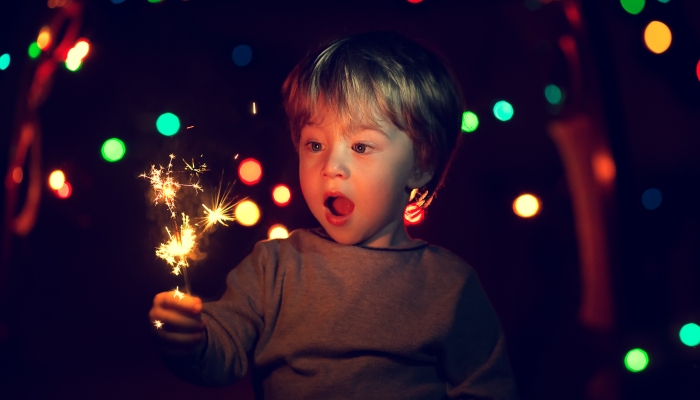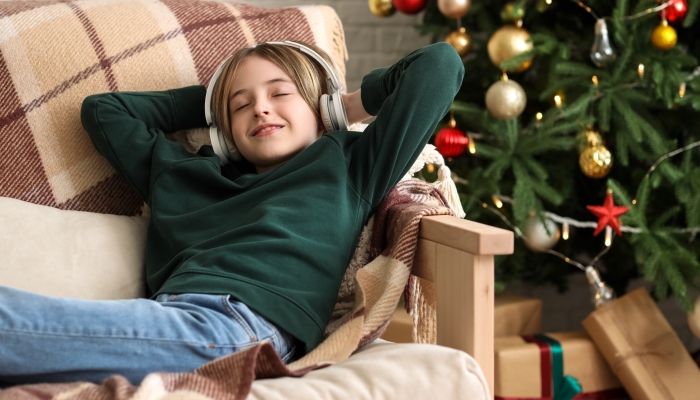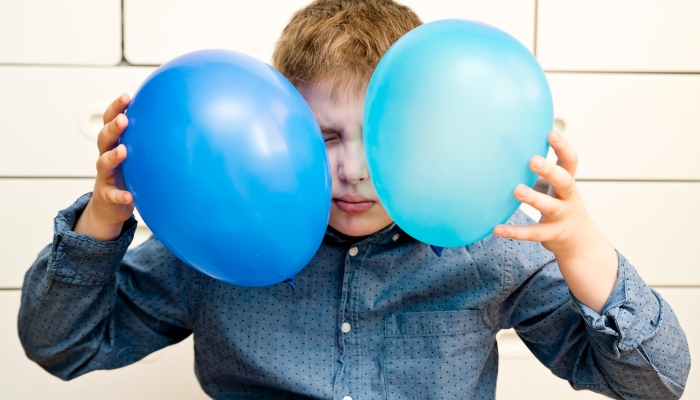8 Tips For a Successful Sensory-Friendly New Year’s Eve Party

- Individuals with autism spectrum disorder or sensory processing issues may find parties and celebrations triggering, but you can take steps to make your New Year’s Eve celebration sensory-friendly.
- An inclusive party will enable everybody to attend the event and have a good time.
- Finding out a person’s triggers in advance can help you plan a trigger-free party for your autistic guests.
- Preparation is key—giving your guests plenty of time to prepare can help your party succeed.
- Ensure you give guests a detailed run down of the event beforehand so they know what to expect.
Do you have someone with a sensory processing disorder or a child with autism within your social circle? If so, you’ll want to create a New Year’s Eve celebration that’s inclusive and welcoming to everybody. Luckily, there are simple steps you can take to make your New Year’s Eve party work for all your guests, even the child with autism.
When hosting a sensory-friendly New Year’s Eve party, the key is to start your planning early. If you’re not an expert in sensory processing, you’ll have much to learn when planning your party. Fortunately, your guests will be on hand to help. If you’re hosting an autistic child over the holiday season, ask their parents to tell you everything you can do to help their child during the visit.
If their child doesn’t like loud noises, they’ll likely bring noise canceling headphones, but it may help to purchase a pair in case they forget to bring them. They may not like watching fireworks and would perhaps opt for a calm movie night instead. The more information you have, the better able you’ll be to create an environment the guest feels comfortable in.
Speak to other guests beforehand to ensure people understand your modifications to the party. Tell other children about the importance of being kind and understanding. Make sure people know to keep the noise down and leave the quiet corner quiet.
Try out these 8 tips for a successful sensory-friendly New Years Eve.
1. Limit the Number of Guests

Busy places, crowds, and lots of strangers can be overwhelming for people with sensory processing issues. Keeping the guest list small and familiar is a good idea so everyone feels comfortable at the party. You should communicate the guest list in advance to help parents prepare their children for the event.
2. Plan Ahead of Time

A simple way to make your celebrations autism-friendly is to plan in advance and communicate your plans with the guest list. Make sure any guests with sensory processing issues have time to adjust to the idea of the celebrations. Let them know the times, guests, location, food, and games.
Communicate as much as you can. If you aren’t an autism expert, ask the guests how to ensure your party will work for them.
3. Choose the Right Environment

Children with sensory needs may prefer a familiar location where they already feel comfortable. You want to avoid sensory overload for your guests. Pick somewhere comfortable with different areas so kids can escape for some downtime.
Have some outdoor space available too, in case children want to run around and burn off steam. Ensure outdoor areas are well-lit and supervised for a late-night celebration. Have quiet spaces set up where kids can find comfy seating, calming activities, and some peace.
4. Consider Things That May Be Overwhelming
For those with sensory sensitivities, everyday sounds, smells, and sights can be overwhelming. If you want to create an environment where everybody can feel comfortable, you must pay attention to the following:

Smells
While that fragranced plug-in may smell divine to you, it could overwhelm any visitors with sensory processing issues. Consider toning down or skipping the perfume you wear for the occasion. It’s worth finding out in advance if any smells are best avoided; cooking smells, in particular, can be problematic.
Lighting
While you may favor bright flashing lights to create a party atmosphere, these are not ideal for a sensory friendly New Year’s Eve party. Instead, opt for softer lights that don’t flash.
Sound
Play low-volume background music rather than blaring party tunes. Have some noise-canceling headphones that guests can use if the noise is too much. Think about the acoustics of the room. Will voices echo and background chatter sound loud in the space? If so, have plenty of breakout rooms so guests can search for quiet spaces. Also, avoid having noisemakers and loud toys at the party.
5. Offer Familiar Food and Drink Options

Find out what food your guests love. Sensory processing issues can severely limit the number of foods a person can eat.
Try to offer some foods you know your guests will like, and pay attention to the specifics. For example, if a guest tells you their child only eats a particular brand of fish fingers, make sure you buy the right brand. Seemingly subtle differences in texture and taste can be huge to those with sensory sensitivities.
Consider food allergies and dietary restrictions to offer an inclusive buffet for your guests. Ensure food is clearly labeled so people know what they can eat. If you have bought a limited number of something for a guest with dietary restrictions, ensure this food is kept to the side for them. There’s nothing worse than finding out another guest has gobbled all the gluten-free crisps, leaving you with nothing to snack on.
6. Select Appropriate Activities and Entertainment

A sensory-friendly party on New Year’s Eve is unlikely to feature noisy games, karaoke, or loud fireworks. Instead, it’s going to be more of a low-key affair. A simple family movie night with extra guests or a board game New Year’s celebration with quiet games and chatting may be best.
Here are some fun activities to have at your sensory-friendly New Year’s Eve party:
Board Games and Jigsaws
Board games are a fun party activity. Invite guests to bring their favorite games so you know you’ll have something for everyone. It’s also worth leaving a table with some incomplete jigsaws out. While these may not appeal to everybody, some guests may enjoy a quiet activity at the party.
Sensory Station
Sensory activities are bound to be a hit, so set up a station with play dough, water beads, and slime. Have the sensory area in a room where it’s OK if kids make a mess. If you have toddlers or young children at the party, always keep the sensory station supervised or avoid using water beads or other materials that may pose a choking risk to young children.
Sensory-Friendly Movie
Having a television playing at a late-night family party is always a good idea. Kids get tired and may seek peace and quiet by lazily watching television as the night goes on.
To make the television room sensory-friendly, select a sensory-friendly movie to play. Older movies are more sensory-friendly because they don’t rely on loud noises, bright flashes, and sensory overload to hold attention. The older Disney animated movies are fantastic for younger children.
7. Designate a Safe Space

If you have guests with heightened sensory needs, offer them a safe space to escape to when necessary. Unlike the sensory station and TV room, this safe space should be exclusively for guests with sensory needs. Other guests should be asked to steer clear of the room to ensure families have somewhere calm to disappear to when necessary.
It doesn’t have to be a big space; in fact, there are benefits to providing a small sensory place. You may want to put some calm down toys such as a calm down sensory bottle, a weighted blanket, or a night light in there. Check on the room throughout the night to ensure other guests aren’t sneaking in to use the space.
8. Manage the Countdown to Midnight

While a traditional New Year’s Eve Party usually includes a loud countdown to midnight, you might want to skip this at a sensory-friendly party. Remember to ensure your dedicated safe space is still available for those with sensory needs during the countdown; people need a bolthole.
Bring The Countdown Forward
If you want to trick younger guests into an early night, you could host an early countdown. That way, they’ll still get to enjoy the excitement of thinking they’ve seen in the New Year, but without the inevitable crankiness that a late night entails. An early countdown may be particularly helpful to families with autistic children who may struggle with sleep that are hesitant to upset their child’s routine.
Countdown Quietly
Instead of the usual shouting, ask your guests to whisper along to the New Year’s countdown this year. Alternatively, use a visual representation such as number cards to handle the countdown. Instead of fireworks, invite children to blow bubbles as the New Year hits.

Related Posts

Eye Conditions and Syndromes, Visual Impairment
Neuralink Announces Plans to Restore Sight to the Blind with Brain Chip
Elon Musk’s company Neuralink has announced plans to begin human trials of its new “Blindsight” brain chip by the end of 2025.

Special Needs
5 Spring Cleaning Tips for Families of Children with Disabilities
Spring cleaning is an opportunity to create a more accessible, organized, and supportive space for your child with disabilities. Declutter, deep clean, and refresh!

Visual Impairment
The Gift of Understanding: How a Young Child Helps His Blind Father Navigate Life
When a parent is blind, it’s natural for people to wonder how their sighted child will adapt. Will they struggle to understand their parent’s needs? Will they feel burdened by...